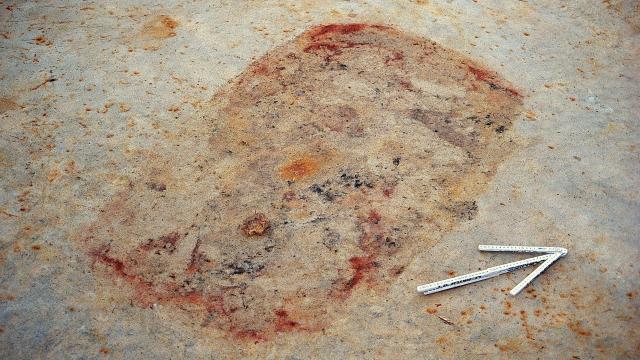The soil in one of the largest Stone Age cemeteries in Europe is so acidic that all the human remains were destroyed thousands of years ago. But now, a team of archaeologists reviewing the site have found that at least 120 people were once buried there, three times previous estimates.
The cemetery, located at Tainiaro in Finnish Lapland, is 6,500 years old and is about 50 miles (80 kilometers) south of the Arctic Circle. Excavations of the site in the 1980s and 1990s revealed about forty graves across one-tenth of the site’s total area. But excavations conducted in 2018 have found that there were once three times that number, and possibly more than 200. The team’s research was published today in Antiquity.
“Stone Age graves leave behind only the shapes of pits and red ochre, which is scarce at Tainiaro,” said Aki Hakonen, an archaeologist at the University of Oulu in Finland and the study’s lead author, in an Antiquity release. “The evidence is quite elusive.”

Red ochre was a common colorant during the Neolithic period and was used in ceremonial contexts like burials. Recent evidence from Çatalhöyük, Turkey—perhaps the most famous Neolithic settlement—suggests that the dead were exhumed and then painted with red ochre and cinnabar.
Though the team believes Tainiaro was a burial site, it is not certain. “For the time being, however, the notion that a large cemetery seems to have existed near the Arctic Circle should cause us to reconsider our impressions of the north and its peripheral place in world prehistory,” the researcher wrote.
The pits at Tainiaro are shaped in a way that suggests they were graves, though red ochre was only found in 23 of the pits. Some of the pits contained ash and charcoal, leading the authors to the possibility that at least some of the Tainiaro pits were hearths. However, they reached this conclusion because many pits had no evidence of burning and those that did lacked evidence consistent with it being a place for burning; thus, the team turned to the possibility of a massive burial site.
“New soil samples could be analyzed for fossilized hair, which has been found in Stone Age graves in recent years,” Hakonen added. “Chemical analyses, such as the collection of ancient DNA directly from the soil, may provide unequivocal evidence for the burial interpretation or reveal entirely new findings that will guide our understanding of the Stone Age society to an even more fascinating direction.”
More evidence—and indeed, excavating the remaining four-fifths of the site that has yet to be examined, could well clarify the vastness and complexity of the northern Stone Age site.
More: Remains of Teenage Girl May Push Back Funerary Traditions in Neolithic Iberia by a Millennium
